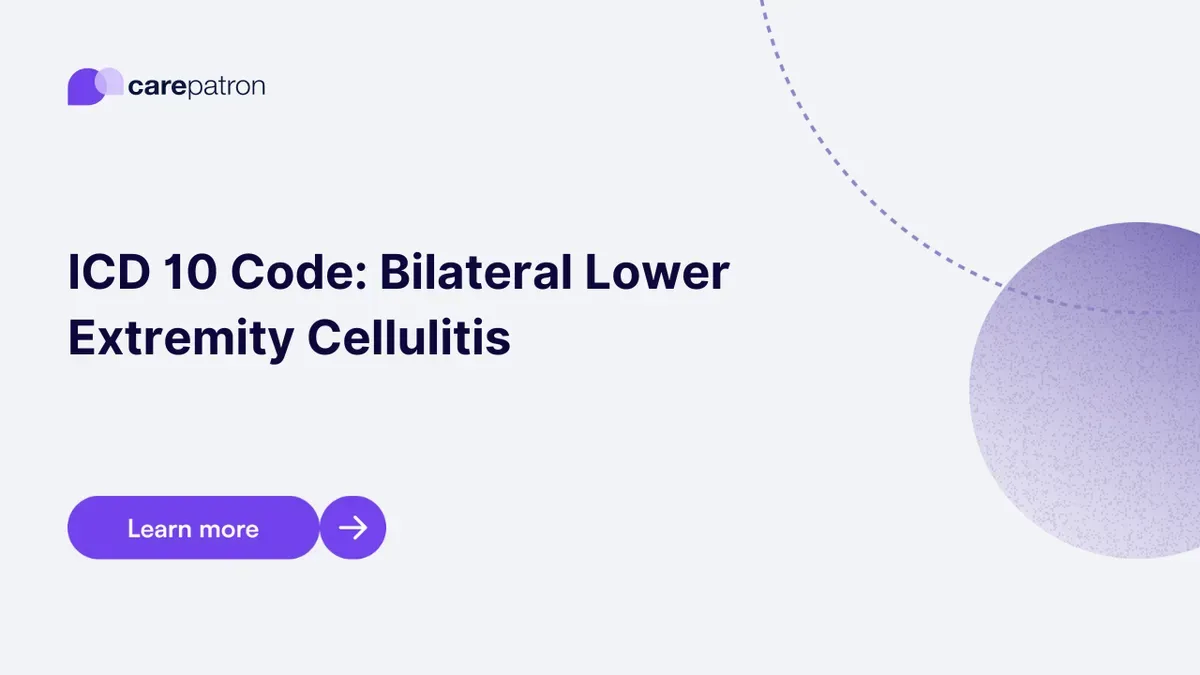
Bilateral Lower Extremity Cellulitis ICD-10-CM Codes
Get familiar with the ICD-10 Codes Used for Bilateral Lower Extremity Cellulitis. Learn about treatment options and the importance of diagnosis codes.
Use Code
Commonly asked questions
An ICD-10 code for bilateral lower extremity cellulitis is employed for reimbursement, research, and statistical purposes, indicating a bacterial skin infection affecting both legs.
Common treatments for bilateral lower extremity cellulitis involve antibiotics targeting the specific bacteria causing the infection, pain medication for relief, leg elevation to reduce swelling and pain, cold compresses for inflammation, and compression stockings to enhance circulation and reduce swelling.
A diagnosis code for bilateral lower extremity cellulitis is a distinctive identifier encompassing factors like infection location, severity, and underlying cause specific to each patient's condition. The code varies based on individual circumstances, such as the distinct codes for cellulitis caused by a cut or scrape versus that caused by lymphedema.
EHR and practice management software
Get started for free
*No credit card required
Free
$0/usd
Unlimited clients
Telehealth
1GB of storage
Client portal text
Automated billing and online payments
